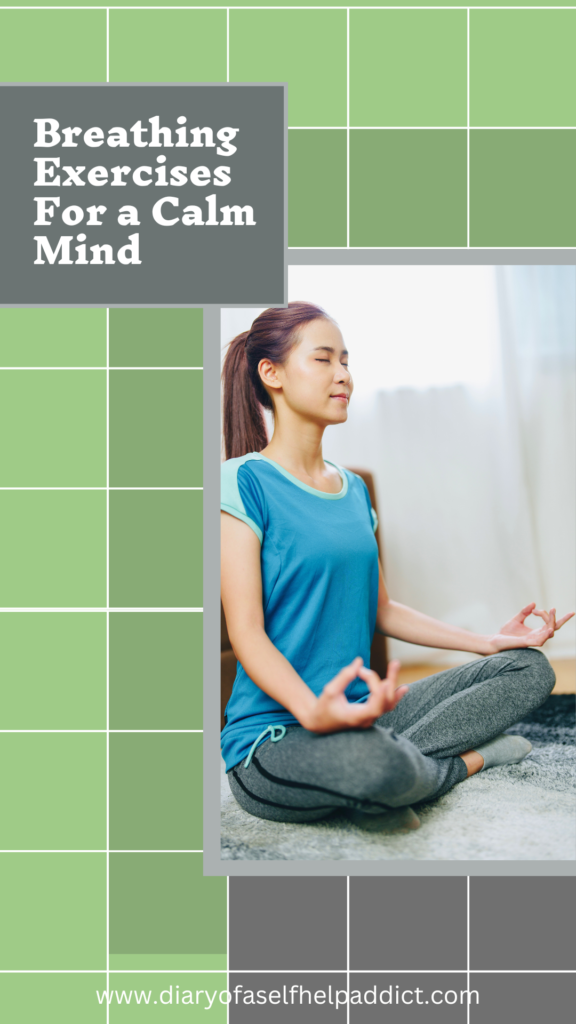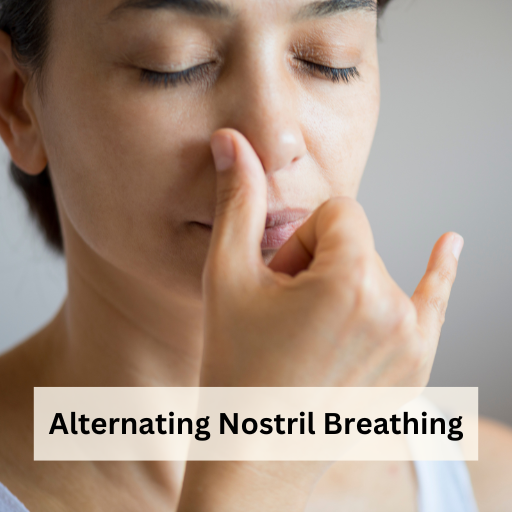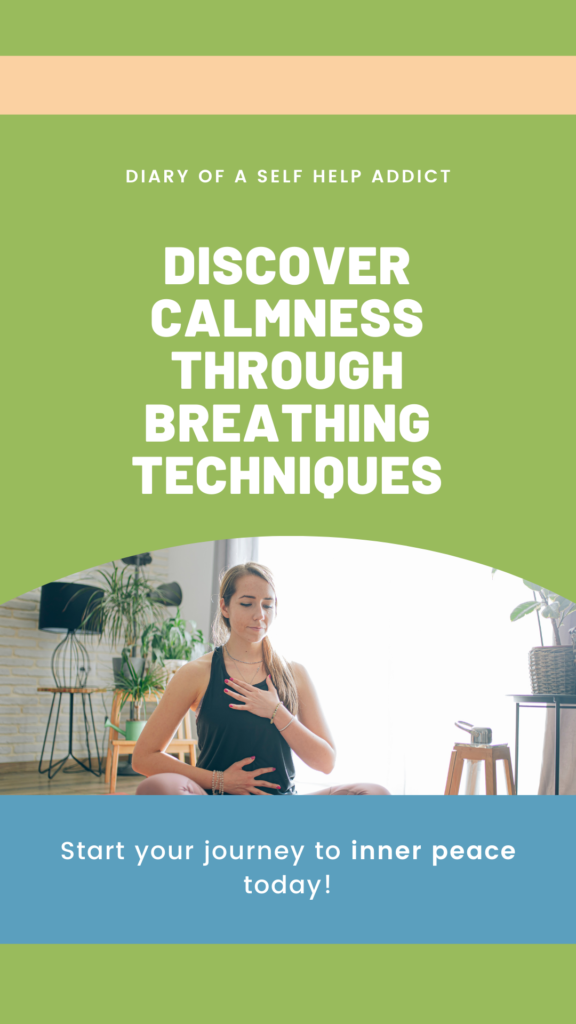
In today’s fast-paced world, it’s easy to feel overwhelmed. With constant demands on our time and attention, finding a way to stay grounded and calm is essential for maintaining mental and physical health. One of the most accessible yet powerful tools we have at our disposal is something we often take for granted: our breath. How we breathe can influence our mood, energy levels, and even long-term health. In this post, I’ll guide you through simple, effective breathing exercises designed to keep you calm and grounded, with the added benefits of improving your lung capacity and decreasing your blood pressure and overall well-being.
Why Focus on Breathing?
Breathing is a natural process, so why should we put effort into thinking about it? The answer lies in how deep, mindful breathing can engage our parasympathetic nervous system, often called the “rest and digest” system. When stressed, anxious, or overworked, our body defaults to shallow, rapid breathing, which activates our fight-or-flight response. This leads to heightened stress, increased heart rate, and muscle tension.
Mindful, controlled breathing, on the other hand, tells the body it’s safe. By taking deeper, slower breaths, you signal the brain to relax. With consistent practice, you can train your body to respond to stress calmly instead of panicking. Here are a few incredible benefits that deep breathing can bring into your life:
- Reduces Stress and Anxiety: Slowing your breath can lower cortisol levels, a hormone associated with stress, and can create an immediate sense of calm.
- Improves Oxygenation: Deep breathing delivers more oxygen to your bloodstream, fueling your brain and muscles. This can increase clarity, focus, and physical stamina.
- Boosts Lung Capacity: Over time, regular deep breathing exercises improve lung function by increasing lung capacity and efficiency, helping you feel more energized and less fatigued.
- Balances Your Mind: Conscious breathing keeps you grounded, helping you stay present in the moment, which can be particularly beneficial for those struggling with anxiety or emotional overload.
- Lowers Your Blood Pressure: Research shows that controlled, deep breathing can lower blood pressure in less than 10 minutes. When you’re stressed or anxious, your blood pressure can rise due to the body’s natural fight-or-flight response, causing your heart to pump faster and your blood vessels to constrict. Deep, slow breathing triggers the opposite effect by engaging the parasympathetic nervous system, which helps to slow your heart rate and relax blood vessels. This process decreases the amount of pressure against your artery walls, which in turn lowers your blood pressure.
Related Read: Discover the Rossiter Stretching Technique: A Path to Pain Relief
Let’s Get Started: Simple Breathing Exercises for Calm
Here are some simple but highly effective breathing techniques to incorporate into your daily routine. They are great for calming your mind, grounding your energy, and improving overall well-being.

Diaphragmatic Breathing (Belly Breathing)
This technique is the foundation of deep breathing. It helps engage the diaphragm, the muscle just below the lungs, allowing for a fuller and more controlled breath.
How to Practice:
- Sit or lie down in a comfortable position.
- Place one hand on your chest and the other on your belly.
- Inhale deeply through your nose for a count of 4, allowing your belly to rise as you fill your lungs with air. Your chest should remain still.
- Exhale slowly through your mouth for a count of 6, feeling your belly lower as you release the breath.
- Repeat for 5–10 minutes.
Benefits: Diaphragmatic breathing is excellent for reducing stress, lowering heart rate, and helping your body transition into a state of relaxation. It also strengthens the diaphragm, improving lung capacity over time.
4-7-8 Breathing Technique
This popular technique is excellent for calming the mind and body quickly. The 4-7-8 breathing technique is often recommended for those who struggle with anxiety or sleep issues.
How to Practice:
- Sit comfortably and close your eyes.
- Inhale quietly through your nose for a count of 4.
- Hold your breath for a count of 7.
- Exhale entirely through your mouth, making a whooshing sound for a count of 8.
- Repeat the cycle 4–6 times.
Benefits: The 4-7-8 technique promotes relaxation, reduces anxiety, and can even help with insomnia. Holding your breath in the middle of the cycle increases oxygenation in the bloodstream, calming the nervous system.
Box Breathing (Square Breathing)
Box breathing is a simple yet effective technique often used by athletes, first responders, and those in high-stress professions to stay focused and calm under pressure.
How to Practice:
- Sit with your back straight, or lie down in a comfortable position.
- Inhale slowly through your nose for 4 counts.
- Hold your breath for 4 counts.
- Exhale through your mouth for 4 counts.
- Hold again for 4 counts.
- Repeat for 5–10 minutes.
Benefits: Box breathing helps regulate your nervous system, reduce stress, and increase mental clarity. It’s a great technique to use before important meetings or presentations or when you feel overwhelmed.

Alternate Nostril Breathing
This ancient yogic breathing practice helps balance the left and right hemispheres of the brain, creating a sense of calm and harmony.
How to Practice:
- Sit comfortably with your spine straight.
- Close your right nostril with your thumb and inhale slowly through your left nostril.
- Close your left nostril with your ring finger and release your right nostril, exhaling slowly through the right side.
- Inhale through the right nostril, then close it with your thumb, releasing the left nostril to exhale.
- Repeat for 5–10 minutes.
Benefits: Alternate nostril breathing balances the energy flow between both sides of your body, enhancing mental clarity and calming the mind. It’s particularly helpful in managing stress and improving concentration.
Resonance Breathing (Coherent Breathing)
Resonance breathing involves taking slower breaths, which sync your heart and respiratory rates, leading to a balanced nervous system.
How to Practice:
- Sit comfortably or lie down.
- Inhale gently through your nose for a count of 5.
- Exhale gently through your nose for a count of 5.
- Focus on smooth, rhythmic breathing for 10–15 minutes.
Benefits: Resonance breathing enhances the parasympathetic nervous system, leading to deep relaxation. Often done during a meditation practice, it’s perfect for long-term stress management and can improve heart and lung health.
When to Practice Breathing Exercises
You can practice these breathing exercises to reset or calm your mind. Here are some ideal times to incorporate them into your day:
- Morning Routine: Start your day with a few minutes of deep breathing to set a calm tone for the day ahead.
- Before Bed: Wind down with calming techniques like the 4-7-8 or resonance breathing to prepare your body for restful sleep.
- During Breaks: If you’re feeling overwhelmed at work or school, take a few moments for box breathing or alternate nostril breathing.
- Before or After Exercise: Breathing exercises can help prepare your lungs for physical exertion or assist in cooling down and recovery post-workout.
- Stressful Situations: Deep breathing can help you calm down and regain control anytime you feel anxious, overwhelmed, or out of control.
- Before Medical Procedures: Whether you’re nervous about going to the doctor’s office or stressed about having a medical procedure like a blood draw, these breathing techniques can help calm your nerves and decrease your blood pressure.
How to Use Breathing to Lower Blood Pressure Quickly
If you ever find yourself feeling stressed or notice that your blood pressure is rising, here’s how you can use these techniques to bring it down in under 10 minutes:
- Find a Quiet Space: Sit or lie down in a comfortable position.
- Choose a Breathing Technique: Diaphragmatic breathing, 4-7-8, or resonance breathing are excellent for lowering blood pressure.
- Focus on the Breath: Take slow, deep breaths and fully relax with each exhale.
- Monitor the Time: After 5–10 minutes of deep breathing, you should feel calmer and decrease your blood pressure.
Final Thoughts: Make Breathing a Daily Practice
Breathing is more than just a function of life; it’s a tool that can bring peace, improve your physical health, and help you remain grounded in the most challenging moments. Incorporating breathing exercises into your daily routine will significantly improve your stress levels, lung capacity, and overall well-being.
Whether at home, at work, or on the go, these breathing techniques are easy to practice and can offer immediate relief from the stresses of modern life. So, take a deep breath, let it out slowly, and enjoy the calm that follows.
Remember, consistency is key. The more you practice, the more your body will naturally adopt these calming breathing patterns, helping you stay calm and grounded no matter what life throws your way.
Pin it for later


Leave a Reply